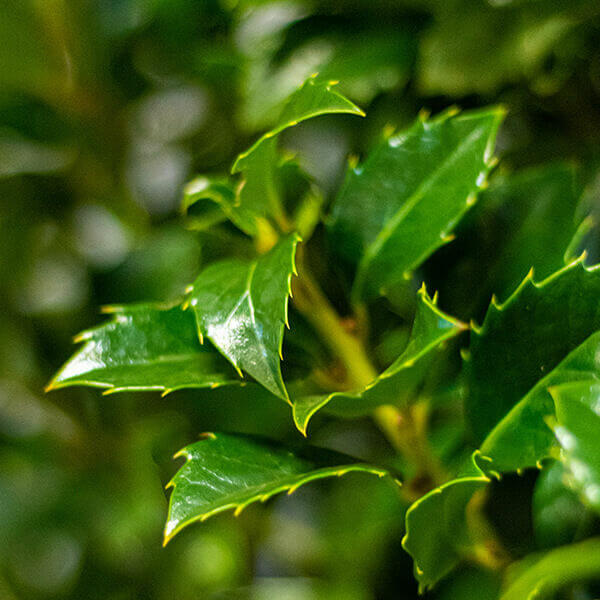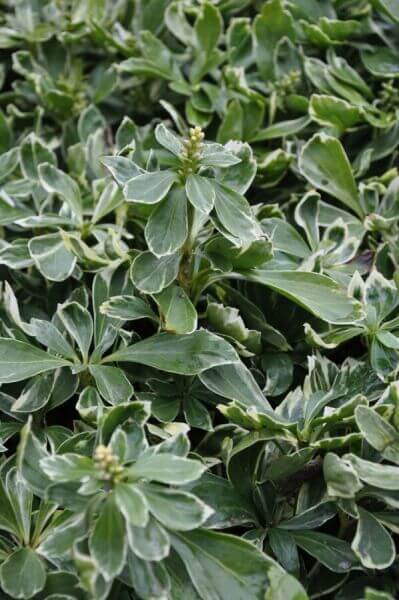Best Hedging Plants For Pollinators
Best Hedging Plants For Pollinators
Blog Article
Hedging Plants For Clay Soil
Improve your garden's attraction with lavish hedge varieties such as Yew (Taxus), Thuja, Laurel, Photinia, and Bamboo, commemorated for their structural stability and ecological benefits.
Yew and Thuja supply evergreen coverage and winter strength, while Laurel offers quick development and broad, fragrant leaves.
Photinia includes seasonal charm with its dynamic red foliage, and Bamboo provides a low-maintenance, serene ambiance.
These hedges enhance air quality, reduce noise, and produce tranquil, personal spaces.
Appropriate planting, spacing, and upkeep make sure vigorous growth and environmental consistency.
Check out how these lavish varieties can elevate your garden's charm and wellness.
Secret Takeaways
Transform Your Garden With Lush Hedge Varieties
- Select Yew for its dense, evergreen growth and exceptional durability.
- Opt for Laurel for its fast growth and broad leaves, guaranteeing fast personal privacy.
- Pick Photinia for its lively seasonal foliage, which turns a striking dark red.
- Utilize Bamboo for a low-maintenance, winter-hardy hedge with aesthetic appeal.
- Space plants 2-3 per meter and prune regularly for ideal growth and health.
Popular Hedge Plants
When transforming a garden with rich hedge ranges, it's vital to think about popular hedge plants such as Yew, Thuja, Laurel, and Photinia due to their special attributes and advantages.
Yew (Taxus) is extremely respected for its durability and thick, green development, making it a prime option for withstanding landscapes.
Thuja is noted for its evergreen foliage and robust winter durability.
Photinia adds seasonal vibrancy with red leaves that darken in time, creating dynamic visual appeal.
Laurel offers quick development and fragrant, broad leaves, suitable for quick privacy.
Additionally, Bamboo is an excellent option for atmosphere, providing a low-maintenance, winter-hardy choice that enhances the garden's aesthetic with its elegant, swaying walking canes.
These choices accommodate a variety of horticultural needs and choices.
Advantages of Garden Hedges
Garden hedges offer a multitude of advantages, making them an important addition to any landscape. These natural barriers are economical to implement and provide substantial wind security, enhancing air blood circulation and adding to noise decrease. The thick foliage of hedges like Thuja and Beech ensures personal privacy by blocking visibility, developing a peaceful and secluded environment.
Hedges likewise play an important role in microclimate guideline, providing a steady environment that fosters plant development and reduces temperature level changes. Their intricate leaf structures filter contaminants, enhancing air quality and contributing to a much healthier garden community.
Additionally, hedges master sound reduction, taking in and deflecting sound waves to lower ambient noise levels. This double functionality of offering both visual and acoustic personal privacy boosts the general harmony and aesthetic appeal of any garden.
Planting and Maintenance Tips
For an effective hedge, meticulous preparation of the planting area is vital. Ensure the soil has appropriate pH and drainage to support strong root development.
Space the plants appropriately for the selected types. Water the hedge frequently throughout its preliminary growth stage, changing as required with seasonal modifications.
Execute a organized bug control and illness avoidance technique, using chemical or natural treatments when needed. Routinely inspect for aphids, termites, and fungal infections.
Apply mulch to keep moisture and reduce weeds. Seasonal pruning promotes dense growth and air blood circulation, essential for plant health.
Following these guidelines will help you cultivate a lively, well-maintained hedge that enhances the beauty of your garden.
Spacing and Cutting Standards
Spacing and Cutting Guidelines
Proper spacing and trimming are crucial for cultivating healthy, aesthetically appealing hedges. Sufficient spacing guarantees each plant receives enough nutrients, light, and air flow.
Follow these guidelines for optimal hedge upkeep:
- Spacing: Position hedge plants 2-3 plants per meter to motivate robust growth.
- Pruning Strategies: Routine pruning is important for maintaining wanted hedge height and shape. Cut new development in summertime and cut back older wood throughout winter.
- Seasonal Care: Change trimming schedules and methods according to seasonal requirements to guarantee plant health.
- Hedge Height: Frequently screen and cut to preserve the preferred hedge height and achieve consistent visual appeals.
Sticking to these actions will ensure your hedge grows, enhancing both the appeal and performance of your garden.
Choosing the Right Hedge
Selecting the Right Hedge
Picking the appropriate hedge includes examining factors such as fully grown height, foliage density, and ecological resilience. Successful hedge plant choice needs understanding each species' development characteristics and site-specific versatility.
For instance, Yew (Taxus) uses exceptional longevity and dense development, while Thuja is significant for its winter resilience. Furthermore, thinking about upkeep requirements is crucial; fast-growing species like Laurel or Privet need routine cutting, whereas low-maintenance alternatives like Bamboo or Ivy may be preferable for those seeking minimal upkeep.
Environmental factors such as soil type, light accessibility, and moisture conditions must likewise direct the choice procedure. This cautious method guarantees the selected hedges will prosper, supplying both visual and practical benefits to the garden landscape.
Delivery and Planting Guidance
To ensure your hedge plants flourish, they ought to be delivered by specialized carriers and planted without delay upon arrival.
Follow these necessary actions for effective planting:
- Soil Preparation: Enrich the soil with raw material to improve drain and nutrient material.
- Planting Depth: Develop a trench two times the width and equal to the depth of the root ball.
- Watering Techniques: Water completely after planting, keeping the soil regularly damp but not saturated.
- Mulching: Use a layer of mulch to retain moisture and reduce weeds.
Client Assistance and Service
Provided the essential function of prompt help in horticultural pursuits, our client support group is available 6 days a week through telephone, email, and social media to provide expert suggestions and promptly deal with any concerns. Their devotion to fast action times guarantees client complete satisfaction by resolving inquiries related to plant health, optimum planting techniques, and upkeep schedules.

Schedule
This detailed support group, reinforced by an excellent 9.3/ 10 client rating, highlights our dedication to improving the gardening experience for every customer.
Frequently Asked Concerns
How Long Does It Consider Hedge Plants to Establish?
Hedge plants usually need one to three years to end up being fully developed, with the exact period varying by types and growing conditions.
Effective care throughout this critical period is necessary for robust growth. Constant watering, vigilant weed control, and suitable fertilizer application are essential in promoting strong root development.
For instance, fast-growing types like Laurel may develop quicker, while slower-growing varieties such as Yew might take longer. Thorough maintenance accelerates the facility procedure, resulting in healthy and thick hedges.
What Are the very best Hedge Plants for Privacy?
The question of the finest hedge plants for personal privacy includes evaluating evergreen and deciduous choices.
Evergreen hedges like Thuja, Laurel, and Cypress supply year-round protection, ensuring continuous privacy.
On the other hand, deciduous hedges such as Beech use seasonal privacy, shedding leaves in colder months.
Key maintenance suggestions for personal privacy hedges consist of routine cutting, fertilizing in spring, and correct spacing-- normally 2 to 3 plants per meter.
Additionally, consistent watering and diligent weed removal are crucial for promoting healthy, dense growth.
Can Hedge Plants Attract Wildlife to My Garden?
Yes, hedge plants can attract wildlife to your garden by providing essential advantages like shelter, food, and nesting sites, consequently boosting regional biodiversity. Yew, holly, and laurel are excellent for attracting birds, while ivy supports a variety of pests.
Nevertheless, it is essential to note that there are some drawbacks, such as increased upkeep to handle pests and regular maintenance. Carefully selecting and keeping hedge ranges can help stabilize these advantages and drawbacks, ultimately cultivating a sustainable and lively community in your garden.
Are There Any Blooming Hedge Plants Available?
Yes, there are flowering hedge plants available that can improve the charm of your garden.
For example, Elaeagnus, likewise referred to as Olive Willow, produces aromatic white flowers in the fall, adding a touch of sophistication.
Photinia, another popular option, showcases dynamic red leaves that grow into a rich green, creating a vibrant visual result throughout the seasons.
To guarantee these plants thrive, it's necessary to practice correct pruning methods and seasonal upkeep, such as trimming brand-new growth in the summer season and cutting back in the winter.
These procedures will help keep the health and aesthetic appeal of your flowering hedges.
How Do I Avoid Pests in My Hedge Plants?
To prevent insects in hedge plants, use natural pest control techniques and keep proper hedge care. Introduce helpful insects like ladybugs, which take advantage of damaging pests, to create a balanced environment.
Frequently inspect your hedges for signs of invasion and promptly remove any affected parts to prevent the spread. Guarantee the health of your hedges by using well balanced fertilizers and supplying adequate water.
Utilize mulching to retain soil moisture and proper spacing to decrease plant stress and promote robust growth. These practices collectively help in reducing insect problems and preserving a healthy hedge.
Conclusion
In essence, selecting the right hedge varieties such as Yew, Thuja, and Laurel can transform any garden into a tranquil haven. These plants supply year-round plant, boost visual appeal, and offer practical benefits like noise decrease and wind defense.
Appropriate planting methods, accurate spacing, consistent watering, and seasonal cutting are crucial for ideal growth.
Dependable delivery services and skilled consumer support ensure a smooth experience from purchase to planting, making it easier than ever to elevate your outside space.
Garden hedges offer a multitude of advantages, making them an important addition to any landscape. These natural barriers are affordable to implement and supply considerable wind defense, Browse around this site improving air circulation and contributing to sound reduction. The thick foliage of hedges like Thuja and Beech guarantees personal privacy by obstructing visibility, producing a secluded and peaceful environment.

Pruning Techniques: Regular pruning is essential for maintaining wanted hedge height and shape. Cut brand-new growth in summertime and cut back older wood during winter season.
Report this page